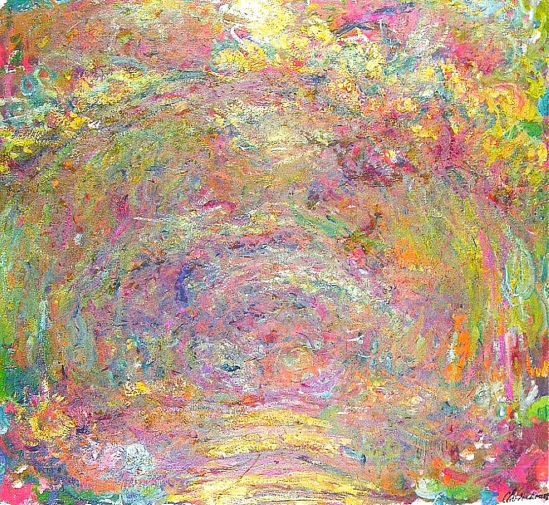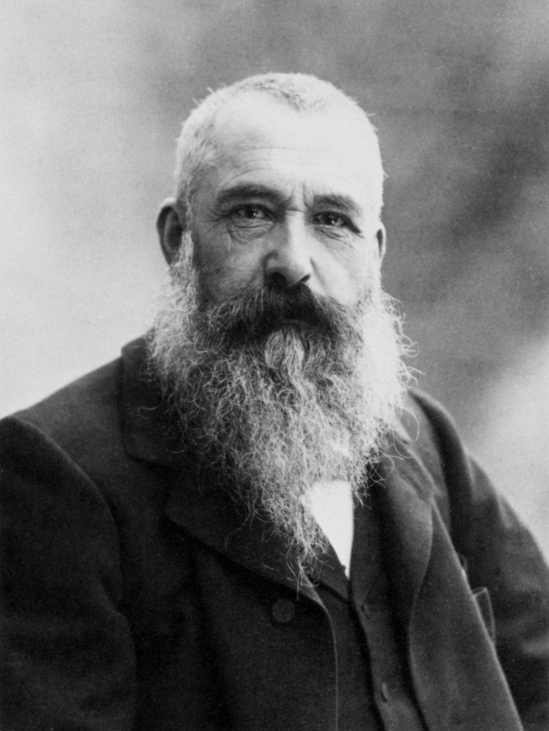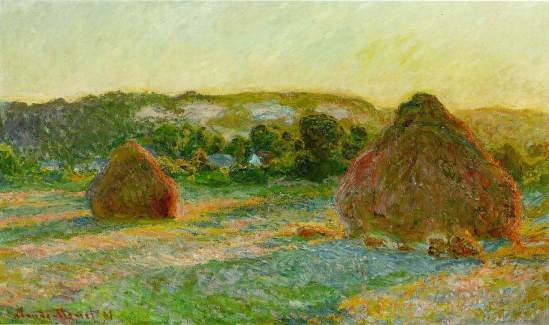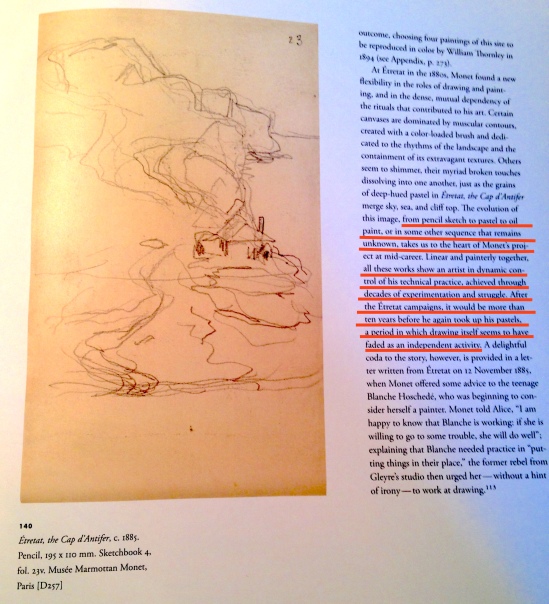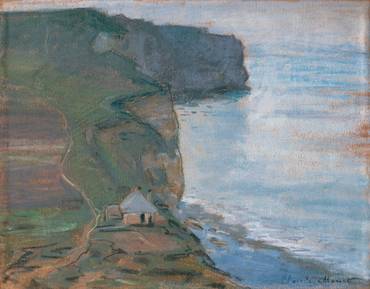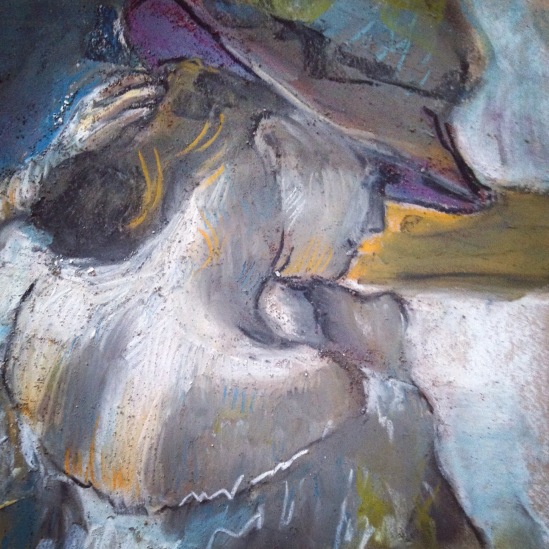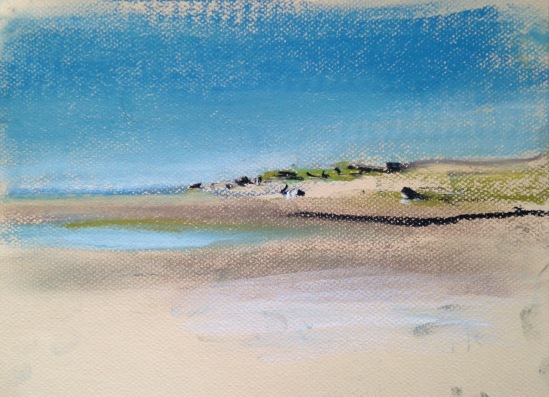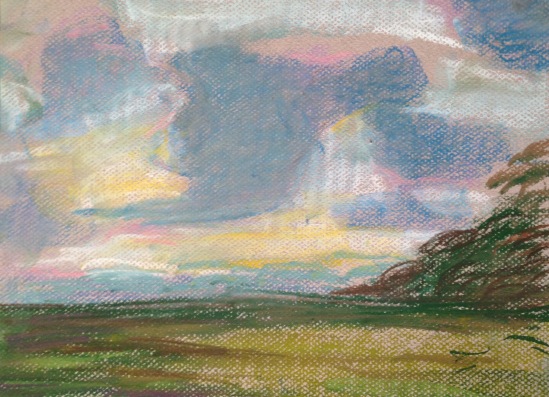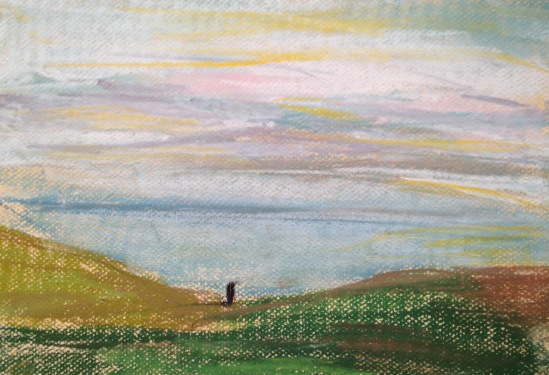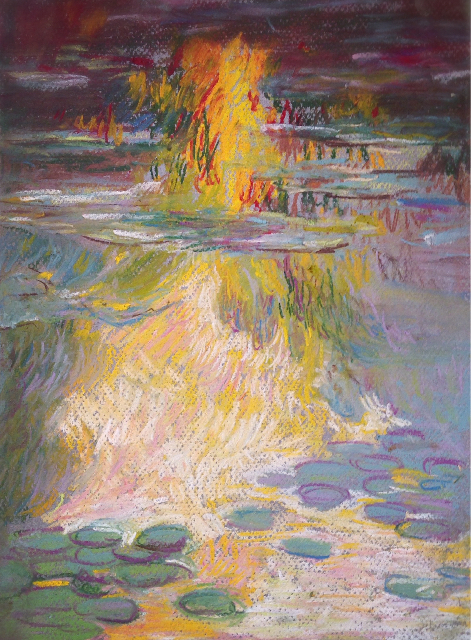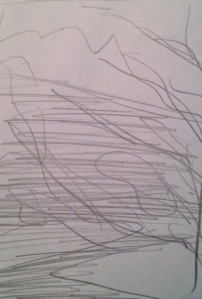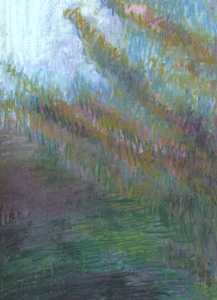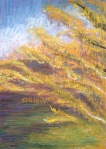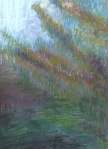Monet’s Note
Today I will continue my study on the works of the leading impressionist of the early 20th century, Claude Monet.
Robert Gordon introduced Monet in his book saying:
When Monet was away on painting expeditions he would write home almost every day. He tells about the weather, about his encounters; he defends himself against reproaches for being so long away from home. Above all he tells about the trouble he is having getting anything finished. Wherever he is, on the Normandy coast, in Brittany or Antibes, in Norway or Italy, the story is the same: first the search for motifs, then an explosion of activity with many starts, followed by fury and frustration at the fickleness of the weather, despair at not being able to finish as much as he had hoped, promises of a happy conclusion next week, the week after, reports of work destroyed, his departure again postponed… Day after day he sits down to tell the same story, an incantation of hope and despair. He prefers the darker side, it seems, even if we allow for the fact that he would have more time to write on rainy days.[2]
In 1905, answering a question about his colors, Monet wrote :
“As for the colors I use, what’s so interesting about that ? I don’t think one could paint better or more brightly with another palette. The most important thing is to know how to use the colors. Their choice is a matter of habit. In short, I use white lead, cadmium yellow, vermilion, madder, cobalt blue, chrome green. That’s all.”[1]
So I am going to do a outdoor study of landscape outside my home with a limited palette.
Pencil Sketch and Color Pastel
Based on my previous post of color study on Monet’s painting, I decided to do a study of two paintings of Monet’s using his technique of painting the same subject two times of day following this direction from my previous blog:
In Rouen, the colors are valued closer to the middle range, allowing them to keep more of their coloristic identity and react with each other in more chromatic ways. In direct sun, the shadows on a façade like this would likely have had much greater contrast. But Monet opts to express that contrast not with value but with a delicately balanced relationship based on temperature and complements. The overall effect is greater luminosity. What value can achieve through contrast, color achieves through chromatic identity.
In the book of The Unknown Monet, I got to know that he also worked in pastel a lot. And “Monet used his lines, his sticks of color, and his paintbrushes with a similar fervor, making the only work in pastel of his new home and perhaps the first, modest contribution to his series of grainstacks.” [3]
Monet started with pencil sketch. With a proper composition to express his emotion about the subject in his mind, he finished the landscape with paints or pastels. In the image and quote below, he moved the composition to the middle of the paper length, letting the image divided across the center. We can see it emphasized the bulk of the Normandy massif and its precipitous conjunction with the sea. What mattered to the artist was emotion, not classic composition.
He just waited for the idea to consolidate, for the grouping and composition of themes to settle themselves in his brain. When he felt he had enough cards, he determined to pass to action, and did so.
Pastel in impressionism had enormous potential in color expression.
It could be used casually, spread in gossamer-thin veils or in dense, dynamic strokes of saturated hue and built up into multi-layered crusts that rivaled brushwork. It was also susceptible to manipulation on the paper surface, merging its powdery traces with previously applied colors and excelling in the representation of clouds, shadows, and reflections. [4]
So I will try to do my study on site with pencil and pastel.
Preparation
Before that, I did some study of Degas and Monet’s pastels to get a basic knowledge of how this medium felt like.
Also, I believe some knowledge can only be obtained by practice, not word.
Through the first image study of Degas, I learnt that I can use the base color of the paper as one of my color.
Through the second image study of Monet, I learnt that I can mix colors by apply two layers of different ones, with an 18 color pastel set.
Through the third image study of Monet, I learnt that leaving too much space to be colored with one side of a pastel stick can be too loose to show the dense volume.
Through the fourth image study of Monet, I learnt that applying two mix hues densely can generate color noise.
Project
My scene:
Pencil
Process A
Afternoon
Pastel
Evaluation A
- I did not do the second one right after the first one as planned, because by the time the first one was done, it was nearly after dark. Once you are commit to chasing the swift moments of the day, it really demands your preparation and speed of working. Now I can understand deeper with Monet’s works:
You’ll understand, I’m sure that I’m chasing the merest sliver of color. It’s my own fault. I want to grasp the intangible. It’s terrible how the light runs out. Color, any color, lasts a second, sometimes 3 or 4 minutes at most…
Most people think I paint fast. I paint very slowly. [5]
-
“When you go out to paint, try to forget what objects you have before you, a tree, a house, a field or whatever… merely think here is a little square of blue, here an oblong of pink, here a streak of yellow, and paint it just as it looks to you, the exact color and shape, until it gives you your own naive impression of the scene before you.” [6]
So I encountered this Monet quote after I finished the first practice. I think this is why he did not paint his marks following the volumes of the object, but rather in all directions to make it flat pattern – because he wanted to focus on the color only. Whereas I made my brushes following the surface of the object, like in the grass on ground. Hence this is the thing I need to keep in mind in my next painting.
- The colors in my practice are too saturated. It may because I only have a general palette of 18 saturated colors. But noticing that Monet mixed complimentary colors and made other subtle color combinations for optical illusion, I would keep myself examining my next painting from a far distance while laying down complimentary colors to neutralize each other.
Process B
Dusk
Evaluation B
The dark side needs to go darker. Given the pastel color set I have, I struggled to achieve the darker colors but not really satisfying. Other than this, I had fun in doing these. I shall practice more with pastels outdoors when the summer is here.
Reference
1. Monet’s Years at Giverny, p28, Metropolitan Museum of Art, New York 1978.
2. Monet, p9, by Robert Gordon and Andrew Forge, Abradale Press 1989
3. The Unknown Monet – Pastels and Drawings, p150, by James A. Ganz, Yale University Press 2007
4. The Unknown Monet – Pastels and Drawings, p114, by James A. Ganz, Yale University Press 2007
5. Letter from Monet to G. Durand-Ruel – Giverny, 3 July 1905
6. Gardner’s Art through the Ages: The Western Perspective, Volume 2, p656, by Fred Kleiner, Cengage Learning, Jan 7, 2009
